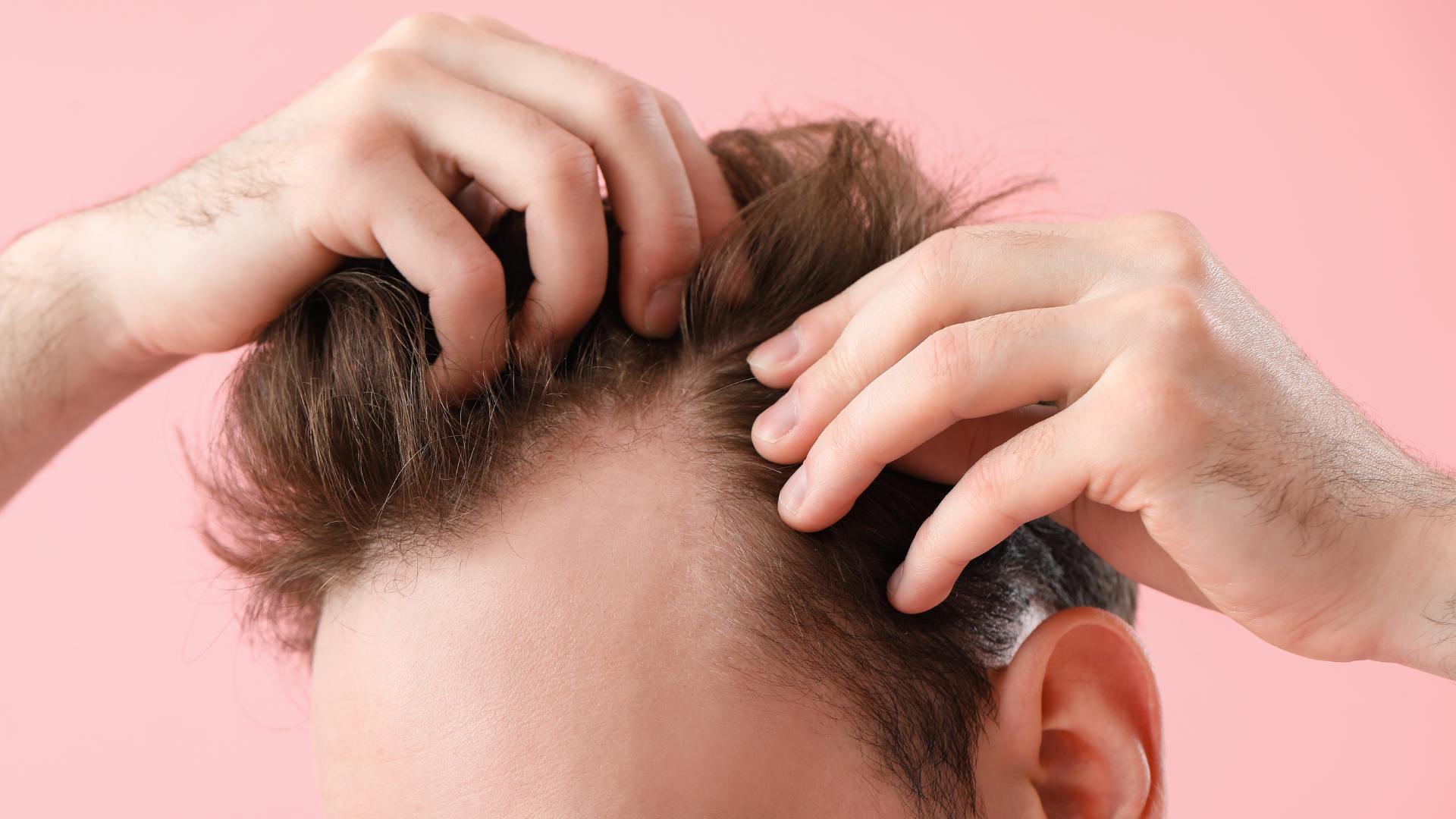
In today’s society, hair loss is not uncommon among men. Whether it’s due to genetics, stress, or other factors, losing hair can have a significant impact on your self-esteem and confidence.
It’s important to know when to seek professional help and what effective treatments are available. Additionally, understanding the causes of hair loss and being aware of the stages it progresses through can help you take appropriate action.

When to Seek Professional Help for Hair Loss
Dealing with hair loss can be overwhelming, and it’s crucial to know when it’s time to seek professional help. If your hair loss is sudden, severe, or accompanied by other symptoms such as itching or pain, it’s recommended to consult with a dermatologist (skincare specialist) or a trichologist (hair specialist). These experts specialise in hair and scalp conditions and can diagnose the underlying cause of your hair loss.
They will examine your scalp, review your medical history, and may perform additional tests if necessary. Understanding the root cause of your hair loss is essential in determining the most effective treatment options.
Seeking professional help for hair loss can also provide you with emotional support during this challenging time. Hair loss can have a significant impact on your self-esteem and confidence, and having a knowledgeable and empathetic professional by your side can make a world of difference. They can offer guidance on coping mechanisms, recommend support groups, or provide resources for counseling to help you navigate the emotional aspects of hair loss.
Remember, you are not alone in this journey, and reaching out for professional help is a proactive step towards regaining control over your hair loss and overall well-being.

Effective Treatments for Hair Loss
There are several effective treatments available for men’s hair loss. The most common and well-known treatment is minoxidil, which is available over-the-counter in various strengths. Minoxidil works by promoting hair growth and prolonging the growth phase of hair follicles.
Finasteride is another popular treatment, but it requires a prescription (see below). It works by blocking the conversion of testosterone into dihydrotestosterone (DHT), which is known to contribute to hair loss. Finasteride has shown promising results in preventing further hair loss and promoting regrowth.
Both minoxidil and finasteride can be used independently but they can be combined. 94% of men who combined Finasteride and Minoxidil treatments showed an improvement in their hair loss.

Where To Buy Minoxidil and Finasteride?
Working with MANUAL, we are pleased to be able to offer you 55% off your first online order. Just take the free online consultation and use the code MAN55 at checkout.
MANUAL is on a mission to challenge stigmas and help men with hair loss. They already have more than 200,000 men trusting their treatment plans. These treatment plans offer minoxidil and finasteride combined or separately.
What’s The Best Hair Loss Treatment For You?
With MANUAL, It couldn’t be easier to find the right hair loss treatment for you:
- Take the free oline assessment. It’s fast, private and available 24/7.
- Targeted treatments: Allow MANUAL to recommend a treatment, scientifically proven and tailored to your individual needs.
- Plan adjustments: A clinicians will monitor and adjust your plan to maximise results. There’s no guess work.
- Unlimited free support: MANUAL will supooirt you throughout the process with continued monitoring for your peace-of-mind.
In addition to medications, there are also non-surgical treatments such as low-level laser therapy (LLLT) and platelet-rich plasma (PRP) therapy. LLLT involves using red light to stimulate hair growth, while PRP therapy utilizes the patient’s own platelets to promote hair regrowth.
It’s essential to consult with a professional to discuss these treatment options and determine which one is most suitable for your specific condition. They will consider various factors such as the extent of your hair loss, your overall health, and your personal preferences.
Another emerging treatment for hair loss is microneedling. This procedure involves using a device with tiny needles to create micro-injuries on the scalp, which stimulates the production of collagen and increases blood flow to the hair follicles. This, in turn, can promote hair growth and improve the overall health of the scalp.
Some individuals opt for natural remedies such as essential oils and herbal supplements to address their hair loss concerns. Essential oils like rosemary and peppermint have been studied for their potential to improve hair growth and thickness. Similarly, supplements containing biotin, vitamins, and minerals essential for hair health can complement other treatments and support overall hair growth.
It’s important to note that results may vary depending on the individual, and consistency is key when using these treatments. Consulting with a healthcare provider or a dermatologist can help you create a comprehensive plan tailored to your specific needs and goals.

Understanding the Causes of Hair Loss
Before determining how to address hair loss, it’s essential to understand the underlying causes. The most common cause of hair loss in men is androgenetic alopecia, also known as male-pattern baldness. This condition is primarily influenced by genetics and hormonal factors.
Androgenetic alopecia is characterised by a gradual thinning of hair, typically starting at the temples and crown of the head. It is a hereditary condition that can be inherited from either parent. While it is more common in men, women can also experience this type of hair loss.
Other potential causes of hair loss include stress, certain medical conditions such as thyroid disorders or autoimmune diseases, and medications. Stress-induced hair loss, known as telogen effluvium, occurs when the body undergoes a significant physical or emotional stressor, causing a large number of hair follicles to enter the resting phase simultaneously.
A thorough evaluation by a professional can help identify the specific cause of your hair loss. This evaluation may include a physical examination, blood tests to check for underlying medical conditions, and a detailed medical history review. Understanding the root cause of your hair loss is crucial in determining the most effective treatment plan for regrowth and restoration.

The 7 Stages of Hair Loss
Hair loss is a gradual process that unfolds over time, manifesting in different stages. By familiarising yourself with these stages, you can better comprehend the evolution of your own hair loss journey. You’ll also know when to take action!
The Norwood-Hamilton scale, a widely used classification system for male-pattern baldness, delineates the progression of hair loss into seven distinct stages.
It commences with Stage 1, characterised by minimal hair loss at the frontal scalp, and advances through to Stage 5, marked by a pronounced recession of the hairline and thinning at the crown. Ultimately, the scale culminates in Stage 7, where individuals may experience complete baldness or a residual horseshoe-shaped pattern of remaining hair.
In order to most effectively your hair loss, you should seek treatment before Stage 3. This is where hair loss starts to become more apparent. Hair will continue to recede at the temples creating an M, U or V shape. Balding spots will also start to appear.
Understanding the specific stage of hair loss you are experiencing can empower you to make informed decisions regarding potential treatments and anticipated outcomes in terms of regrowth.
It’s important to note that hair loss can impact individuals beyond just a physical level; it can also take a toll your self-esteem and confidence. Seeking professional guidance, exploring available treatment options, pinpointing the underlying causes of hair loss, and discerning the various stages of this process are pivotal steps towards taking proactive measures and seeking viable solutions.
By equipping yourself with knowledge and enlisting the support of experts in the field, you can embark on a journey towards effective treatments and a restoration of self-assurance. Remember, there is a wealth of resources and assistance accessible to aid you in navigating the complexities associated with hair loss. You are not alone.























































